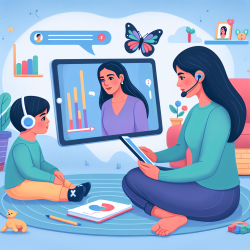Empowering Practitioners: Harnessing Research to Transform Children's Lives
In the realm of speech-language pathology, understanding the intricate workings of the brain is pivotal in crafting effective interventions. Recent research, such as the study on "Functional network collapse in neurodegenerative disease," offers valuable insights that can be translated into practice to enhance outcomes for children.
This study delves into the relationship between brain atrophy and functional connectivity disruptions in neurodegenerative diseases like Alzheimer's and frontotemporal dementia. By examining structural and functional MRI data from 221 patients, researchers identified key patterns that could inform therapeutic approaches.
Key Findings and Their Implications
The study highlights three principal structure-function components that link atrophy patterns to specific brain-wide functional connectivity alterations:
- Overall Atrophy and Connectivity Patterns: The first component correlates overall brain atrophy with decreased connectivity in primary cortical regions and increased connectivity in subcortical and association cortical regions. This suggests that interventions could focus on enhancing connectivity in hypoactive areas while managing hyperactivity in others.
- Syndrome-Specific Patterns: The second and third components reveal syndrome-specific atrophy patterns linked to connectivity changes. For practitioners, this underscores the importance of tailoring interventions to the unique connectivity profiles of each child, potentially improving the precision and effectiveness of therapy.
Applying Research to Practice
For practitioners working with children, understanding these connectivity patterns can guide the development of targeted interventions. Here are some practical steps to consider:
- Data-Driven Assessment: Utilize neuroimaging data, when available, to assess a child's unique connectivity profile. This can inform the customization of therapy plans to address specific connectivity deficits or excesses.
- Collaborative Approach: Work closely with neurologists and other specialists to interpret neuroimaging findings and integrate them into a holistic therapy plan.
- Continuous Learning: Stay informed about the latest research in neurodegenerative diseases and functional connectivity. This knowledge can empower you to make informed decisions and adapt your practice to emerging evidence.
Encouraging Further Research
While the study provides a robust foundation, there is always room for further exploration. Practitioners are encouraged to engage in research collaborations, contribute to ongoing studies, and even initiate their own investigations into the nuances of functional connectivity in children with neurodegenerative conditions.
By embracing a research-informed approach, practitioners can not only enhance their skills but also contribute to the broader body of knowledge that drives innovation in speech-language pathology.
To read the original research paper, please follow this link: Functional network collapse in neurodegenerative disease.










